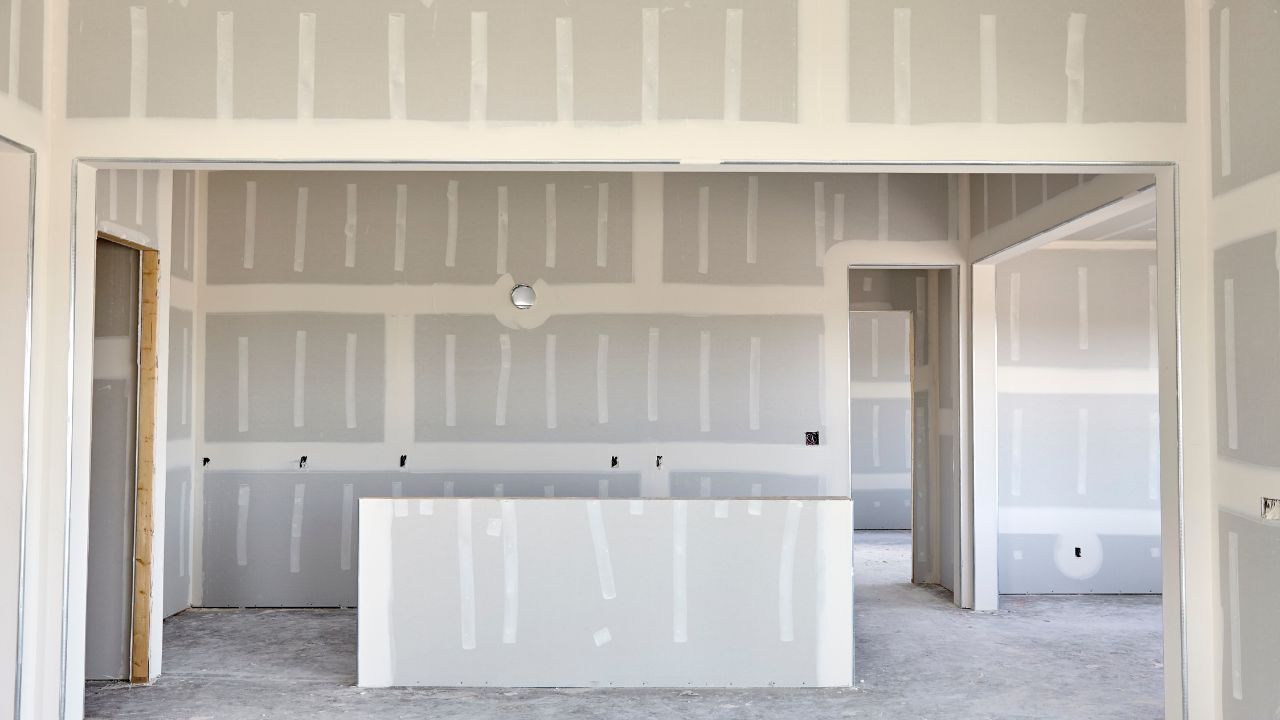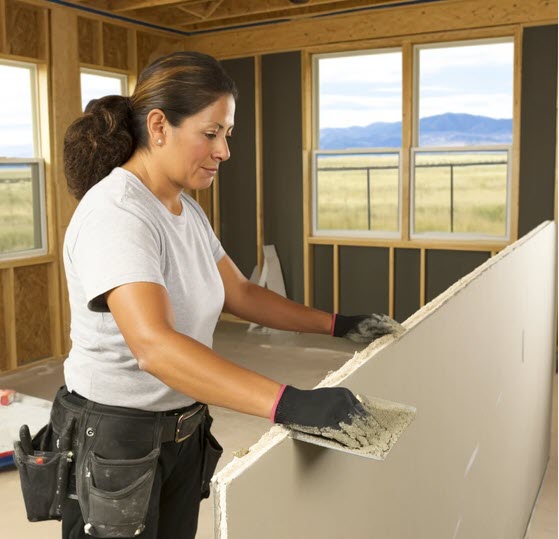Specialist Sheetrock Repair Fort Worth for Quick Fixes
Specialist Sheetrock Repair Fort Worth for Quick Fixes
Blog Article
Drywall Setup Made Easy: Tips for Perfect Results
Drywall installation is often viewed as an overwhelming task, yet with the right technique and knowledge, it can end up being a convenient venture. Grasping methods for reducing, hanging, and finishing drywall can substantially impact the result.
Picking the Right Materials
Picking the proper products for drywall installation is vital to achieving a long lasting and cosmetically pleasing finish. drywall installation. The main part, drywall sheets, generally been available in numerous thicknesses, with 1/2-inch sheets being conventional for interior walls. For locations calling for additional moisture resistance, such as shower rooms or cooking areas, consider using eco-friendly board or concrete board, which are specifically made to withstand humidity

In addition, selecting the appropriate fasteners-- either screws or nails-- is crucial for safeguarding the drywall to the framing. Drywall screws are typically favored for their holding power and decreased risk of popping. Lastly, consider the complements such as primer and paint, which not only enhance the appearance yet additionally secure the drywall from wetness and wear.
Preparing the Installation Location
Before starting the drywall setup process, it is essential to prepare the setup location completely. A clean office lessens the threat of damage to existing things and allows for effective activity throughout setup.
Following, inspect the walls and ceiling for any kind of imperfections, such as fractures, openings, or mold and mildew. Address these problems ahead of time; patch any type of problems and allow adequate time for fixings to dry. Furthermore, ensure that electrical outlets, buttons, and pipes are properly positioned and represented, as this will certainly affect drywall positioning.
Take into consideration the ecological problems too. A steady temperature and humidity level are important for optimal adhesion and performance of the drywall materials. If required, utilize a dehumidifier or heating unit to create suitable conditions.
Trimming and Hanging Drywall
The key to reliable drywall setup depends on the accurate cutting and dangling of the panels. Begin by determining the room properly, considering any type of obstructions such as electric outlets or home windows. Use a straight edge and an energy blade to score the drywall along your dimensions, after that snap it along the scored line for a tidy break. For even more complex cuts, such as around outlets, a drywall saw can be utilized for accuracy.

Always work from the top down and entrusted to right, making certain that you maintain a staggered pattern to boost stability. Appropriately hanging the drywall establishes the foundation for a smooth surface, inevitably resulting in remarkable results in your drywall job.
Insulation and Mudding Techniques
While appropriate cutting and dangling of drywall establishes the stage, the next critical step includes understanding taping and mudding techniques to guarantee a smooth coating. Taping is vital for enhancing joints and stopping fractures; it entails installing tape into the applied joint compound (mud) Begin with a top quality fiberglass or paper tape, using the tape over the joint and pushing it into the damp mud making use of a taping blade, ensuring no air bubbles remain.
When the tape is in location, use a slim layer of joint substance over the tape, feathering the edges to create a smooth shift to the drywall surface area. Allow this layer to dry completely before sanding it lightly to get rid of blemishes. Repeat this procedure, using additional layers of mud as necessary-- usually 2 to 3 layers-- while progressively expanding the application location with each layer to attain a smooth appearance.
After the last layer dries out, sand the surface with you could try this out a fine-grit sandpaper up until smooth. sheetrock repair fort worth. Bear in mind to put on a mask throughout fining sand to prevent inhaling dust particles. Understanding these taping and mudding strategies is essential for attaining a professional-quality coating in your drywall setup
Completing Touches for Perfection
Achieving a perfect drywall setup surpasses taping and mudding; it finishes in the ending up touches that raise the overall appearance. These last steps are important in making sure a professional-grade finish that enhances the aesthetics of your room.
Begin by fining sand the dried joint substance to develop a smooth surface. Use a fine-grit sandpaper and a fining sand block or post sander for optimal control. Pay certain interest to edges and edges, as these areas tend to call for more meticulous job. After sanding, clean down the walls with look at here now a wet fabric to get rid of any kind of dust fragments, making sure a clean surface area for painting.
Following, apply a primer especially developed for drywall. This action is necessary, as it helps secure the joint compound and offers a consistent base for the topcoat. When the guide dries, examine for any kind of flaws, and repair as needed.
Final Thought
In verdict, successful drywall installation hinges on the careful selection of materials, extensive prep work of the setup location, and precise implementation of cutting and hanging techniques. Mastery of taping and mudding processes is important for accomplishing a smooth surface.
Drywall setup is typically viewed as a complicated task, yet with the navigate to these guys best technique and understanding, it can end up being a manageable endeavor.Selecting the appropriate materials for drywall installation is crucial to achieving a sturdy and cosmetically pleasing coating.Prior to beginning the drywall installation procedure, it is important to prepare the installation location completely. Grasping these taping and mudding techniques is critical for attaining a professional-quality surface in your drywall installation.
In conclusion, effective drywall installment pivots on the cautious selection of products, complete preparation of the installation location, and specific implementation of cutting and hanging techniques.
Report this page